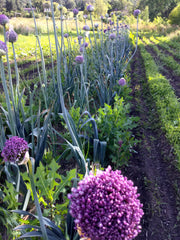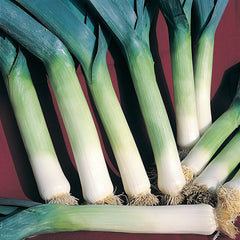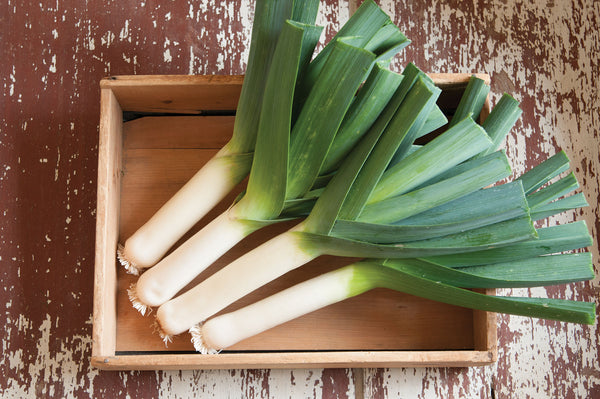Tadorna
tadorna-leek Tadorna Allium ampeloprasum
HOW TO GROW LEEK
Start indoors 8–10 weeks before last frost, plant out 2 weeks before frost. For fall harvest, transplant 16 weeks before first frost, without additional protection. In a hoophouse, you can plant 2-3 weeks later. Direct seed as soon as soil can be worked. Transplant when seedlings reach 10-16” tall or are pencil thick, transplant 6” deep. Blanch stems by hilling soil 2–3 times during the summer. Get an extra harvest by cutting a leek an inch or two above the ground instead of pulling the plant. The plant will grow another leek, eventually the plant will bolt. There are two types of leeks, Summer leeks and Over Wintering leeks where temperatures don’t usually go below 15–25˚F. Soil pH 6.2-7.5. Hardiness zones 1-10. Biennial.
Days from maturity calculated from the date of seeding. Average 10,000 seeds per ounce. Average 105M seeds per acre. Federal germination standard: 60%. Usual seed life: 3 years. Isolation distance for seed saving: 1 mile.
Planting Depth 1/4”
Soil Temp. Germ. 50-75˚F
Days to Germ. 8-16
Plant Spacing 6’
Row Spacing 12-24”
Days To Maturity 120
Full Sun, Moist Well Drained
Days from maturity calculated from the date of seeding. Average 10,000 seeds per ounce. Average 105M seeds per acre. Federal germination standard: 60%. Usual seed life: 3 years. Isolation distance for seed saving: 1 mile.
Planting Depth 1/4”
Soil Temp. Germ. 50-75˚F
Days to Germ. 8-16
Plant Spacing 6’
Row Spacing 12-24”
Days To Maturity 120
Full Sun, Moist Well Drained
- 150 Seeds$3.50
The most reliable OP fall leek. Tadorna has a vigorous medium-length white shank and by contrast very dark blue-green foliage. Holds in the field for fall into winter harvest, and over winters in moderate climates. Moderate leaf disease resistance. Tags: Color: Green, Season: Spring Fall, Certification: Organic.
Meet Your Farmer
We promote fair trade, organic practices and environmental responsibility throughout the Restoration Seeds supply chain. Below are the family farmers and seed suppliers who bring our open pollinated seeds to you.
Wandering Fields Farm
Certified Organic by Oregon Tilth
Seed grower since 2002


Wandering Fields has dropped it’s anchor! After 10 years of farming leased/rented fields, Ben Yohai and Kristina Porter are eager to break ground on their own land in the beautiful Little Applegate Valley. With a sun-drenched south-facing field, we will continue to focus on nightshades, cucurbits, and storage crops, and look forward to expanding to include perennial crops, animals, and more…
Reviews




